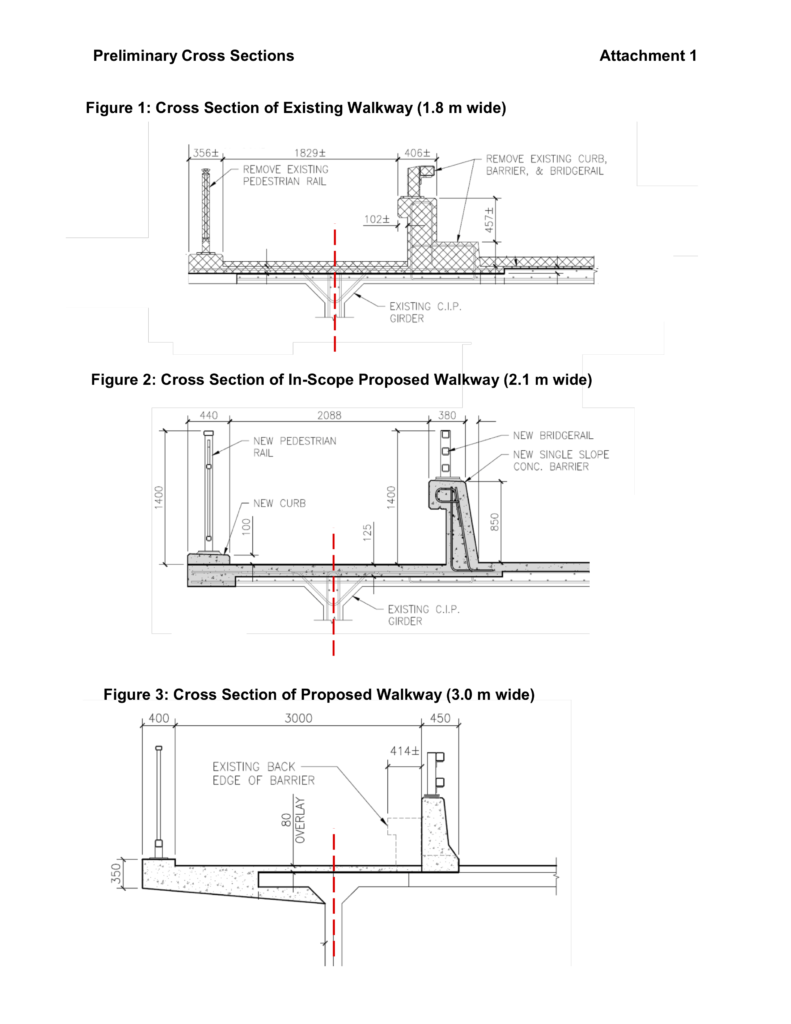Had a great discussion with Friend of Walking Saskatoon (it’s a title!) Ward 2 Councillor Hilary Gough about pedestrian issues in her ward, especially focusing on missing sidewalks, beg buttons and the contintued development of the West-Central Multi-Use Corridor rail trail throughout her ward. Check out our presentation below and also see walkability reports for each neighbourhood in Ward 2.
Ward2-2021Discussion Caswell-Hill Holiday-Park King-George Meadowgreen Montgomery-Place Pleasant-Hill Riversdale WestmountCategory: Uncategorised
Mayoral Dicussion with Charlie Clark
Had a great discussion with freind of Walking Saskatoon Mayor Clark about pedestrian issues in Saskatoon a couple of weeks ago. We heard two great pieces of news: first, that curb ramps on sidewalks will now be automatially installed when regular road maintenance is happening, second, that the Traffic Safety Reserve is still active and available for funding projects.
The latter is quite important, as it is one of the few dedicated sources of funding for sidewalk construction and pedestrian safety projects in the city. We thought it had been taken fully away from the city by the province a few years ago, but Mayor Clark gave us a great clarification that is was just speeding ticket revenue, not red light camera revenue, that was re-directed. That means there’s still (a small) pot of money available for consistent funding of pedestrian-focused capital projects in the city.
We also asked Mayor Clark to keep the bug buttons off city streets. They are explicitly anti-pedestrian and don’t even work correctly.
Ward 6 Discussion w/ Cynthia Block
Had a great discussion with Ward 6 councillor and good friend of Walking Saskatoon Cynthia Block about pedestrian issues in the ward. She was a great help last term in taking the lead on directing federal funding towards pedestrian infrastructure and advocating for the new 20-year sidewalk replacement cycle, two of the biggest funding wins in years at the city.
Our discussion, as always in Ward 6, focused on the still large number of missing sidewalks (despite several blocks slated for construction this summer) and how and if fees from new infill developments can be directed to neighbourhood improvements where the developments are happening. With five new projects in the Ward this year this issue is top-of-mind.
Check out our presentation below and walkability evaluations for each neighbourhood in the ward.
ward6-discussion-2021 Brevoort-Park Buena-Vista Haultain Holliston Nutana Varsity-ViewWard 3 Discussion w/ David Kirton
Had a good chat with new Ward Councillor David Kirton about pedestrian issues in Ward 3. He told us a great story via Moe Neault about Fairhaven residents half-jokingly wanting to keep potholes unfixed to slow cars down on Fairhaven Drive. Ward 3 is full of long, straight, dangerous four-lane roads that encourage speeding and few places to safely cross for pedestrians (“airport runways” quipped Councillor Kirton). The lack of safe crossing and excessive speed on these streets have been brought repeatedly up in area traffic reviews and we discussed this with the Councillor.
While we are talking about Ward 3, check out the walkability evaluations for the neighbourhoods in the ward:
Confederation-Park ConfederationSC Fairhaven Parkridge Pacific-Heights2020 MEEP-Funded Sidewalk Infill Map
These are the streets that will receive new sidewalks courtesy of MEEP funding (maximize map for itemized list).
The Year in Saskatoon Walking 2019 Part 2: Less Plan, More Do
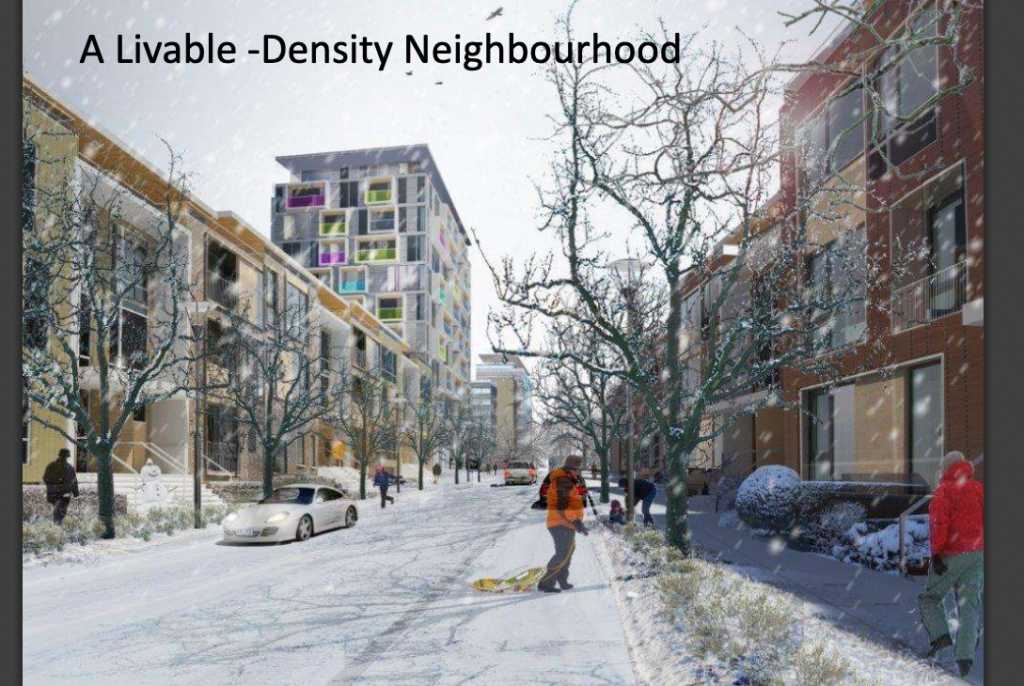
2019 saw the release of the City of Saskatoon’s ambitious Climate Action Plan to much celebration and controversy amid questions about where 19 billion dollars(!!) of money was going to come from in a city that won’t even fund a $2.2 million dollar bike lane.
Deja vu? 2016 saw the release of the City of Saskatoon’s ambitious Active Transportation Plan to much celebration and controversy amid questions about where 250 million dollars(!!) of money was going to come from in a city that won’t even fund a a $2.2 million dollar bike lane (or fund the city’s previous cycling master plan as discussed in the above linked article).
Deja vu Deja vu? 2014 saw the release of the North Downtown Master Plan that would see an multi-use-path and greenway built parallel and above to the CN rail line in North Industrial. Much celebration, controversy, $130M(!!) of city money, blah blah and etc…
Not a fan of the big project plans? Maybe the Neighbourhood Traffic Reviews are more your speed. How about the Climate Adaptation Strategy? There is certainly no shortage of planners, glossy reports, public meetings and consultants over the last several years detailing utopian urban futures on paper.
However, despite all of these great plans for green infrastructure, essentially no money has been spent on actually building any of it. The Active Transportation plan has a small implementation budget, which this year went mostly to a new bicycling bylaw, as do the Neighbourhood Traffic Reviews, but they are a few hundred thousand dollars a year at most, orders of magnitude less money than detailed in the various plans.
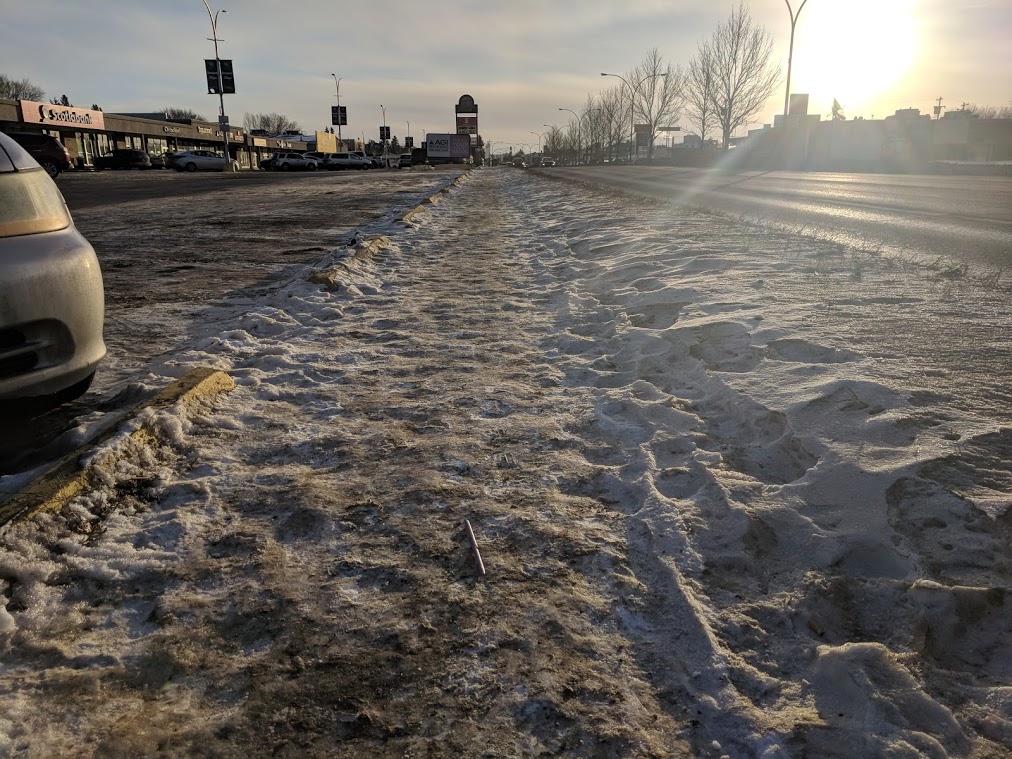
Even more damning is that less money is spent on implementing the capital projects detailed in the plans than on developing the plans themselves. Active transportation infrastructure has an incredible return on investment: every vehicle trip that gets converted to an active transportation trip means less civic spend on infrastructure, less provincial spend on health care costs, fewer carbon emissions and less carcinogenic small-particulate matter poisoning Saskatoon citizens.
The amount of money it takes to get these benefits is tiny: the cost of walking infrastructure projects is measured in the thousands of dollars and huge improvements could easily be funded out of the budgets of these endless and futile planning cycles. There are many idealistic city employees and elected officials who believe in the value of active transportation and green infrastructure: it’s time for them to stop imagining never-to-be-realized futures and start improving the present.
The Year in Saskatoon Walking 2019 Part 1
2019 saw some good and some bad for walkers in Saskatoon. New crossing methods were successfully trialled and there was a renewed commitment to fixing existing walking infrastructure. On the downside, provincial seizure of traffic safety money led to fewer investments in new walking infrastructure, admin planning exercises were far more numerous than infrastructure investments and federal green infrastructure money went everywhere but to active transportation. Below is the first part of our series recapping 2019 in walking.
RRFB Pilot has Good Results
Walking Saskatoon has written about RRFB (rapid rectangular flashing beacon) crossing devices before. Over the last year RRFBs were piloted at five locations and will remain at one (Spadina and 33rd). The good news is that three of the other four crossing locations will get overhead flashing lights instead of RRFBs and multiple future locations have been identified for RRFB based on best-practice guidelines.

WCMUC Path Hits Multiple Roadblocks
While the sad cancellation of the 3rd Avenue bike lane got most of the press over the last year just as big a blow was dealt to the most important piece of active transportation infrastructure being planned in Saskatoon: the awkwardly named West-Central Multi-Use Corridor (WCMUC).
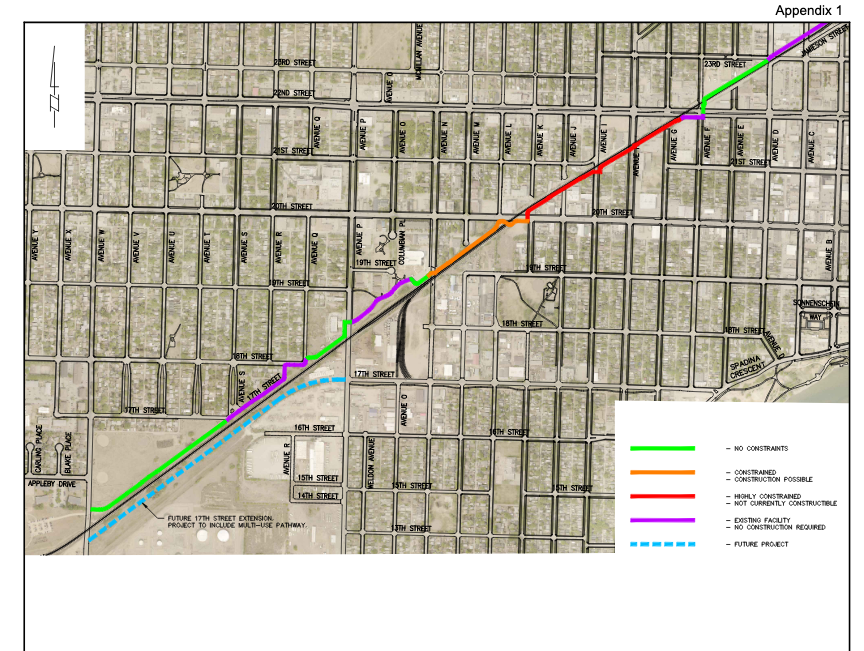
WCMUC is meant to improve and formalize a 3km (!) active transportation corridor that’s already in heavy use, the series of alleys, pathways, roads and goat paths that parallel the CP tracks from 11th Street to Avenue D. This is a huge project and will provide great connectivity and safety in neighbourhoods like Riversdale, Pleasant Hill and West Industrial that have a high walk share. The project’s first phase was completed a few years ago: it’s the path from Idylwyld to Ave. D just off 25th near the police station.
We wrote about the ambitious early plans for the multi-use pathway last year but it’s been nothing but bad news ever since our last update. Flush with federal money from a rail corridor safety initiative the city was optimistic about getting construction started this year. While the design is done, CP hasn’t entered into a lease agreement with the city for the rail company’s lands from Ave. D South to Ave. Q South. Further, CP will not let go of its leases for rail-adjacent land from Avenue F to Avenue K so there is not enough space to put the WCMUC trail in that critical section.
In addition, the city heavily underestimated of the amount of money it would take to build the pathway, only budgeting $1.5M for 3km of rail-adjacent pathway. In an update this year, the city now thinks it will cost $2.5M to build the trail from Avenue D to Avenue F only, about 2/3rds more money for about 15% of the original proposed trail length! If CP is willing to negotiate for that section. If the federal funding can be extended. If the extra million dollars for the project materializes from thin air.
In reality, this project looks dead in the water at worst, heavily delayed at best. City admin is pointing fingers at CP for delays but responsibility for the many missteps in this problems need to be shared amongst all parties. Unfortunately the city might end up losing over a million dollars in scarce federal money for active transportation as a result.
Fixing Saskatoon’s Boulevards
Walking Saskatoon is speaking to Council’s Standing Policy Committee on Transportation tomorrow about fixing the unmaintained city property that exists on so many city streets. See our presentation below and contact us if you have any thoughts.
blvd-presentation-pdfCatching up with 2018 in Pedestrian Infrastructure.
Quick updates on how pedestrian infrastructure fared in 2018 in Saskatoon:
- Additional Funding for Active Transportation Plan Implementation Denied but at least not Cut Entirely.
Lobbying the city to fund the implementation of the recommendations from the Active Transportation Plan is one of groups’s highest priorities. As you can read in our last entry, city council didn’t agree with us and voted against increasing funding to the ATP but at least motions to defund the ATP implementation entirely as well as ending all funding to the Meewasin Valley Authority(!) were defeated. We’ll be back on this item next year and we’ve heard the city might have some ideas as well. The vote to defund ATP implementation and the MVA was completely shocking and won’t be forgotten election time.
2. Sid Buckwold Bridge gets some Upgrades to its Walkway
A major link in the city’s AT network, the Sid Buckwold Bridge is hugely substandard for what its role should be and having the city widen its existing pathway and adding a pathway to the west side was a big focus for Walking Saskatoon. Given the nearby Traffic Bridge/Victoria Avenue upgrades and a large bill for upgrades, council decided not to do any additional improvements to the pathway beyond what was planned as part of an already-existing bridge maintenance plan but the existing pathway is getting an additional 30cm in width and expanded walk barriers as part of already planned work.
It’s not nothing but it is disappointing that in 2018 the active transportation aspects of major roadways are still mostly an afterthought in Saskatoon, although in contrast…
3. The Traffic Bridge/Victoria Avenue Upgrades were Completely Fantastic
The new Traffic Bridge, with 3M-wide walkways on both sides of the bridge, good connections to the Meewasin Trail and the Complete Streets upgrade of Victoria Avenue from the new bridge to Broadway Avenue is the best transportation project the City has ever done. Kudos all around.



4. Vision Zero is kind of a Thing, maybe, sort of..
Several years after the city first examined Vision Zero, the urban planning principle to get traffic fatalities to zero that’s had great success around the world, Councillor Bev Dubois led an internal effort to examine the idea more. What will come of this newest push is largely uncertain, but we covered the city’s uneven efforts towards applying Vision Zero ideals and provided a comprehensive look at what Vision Zero brings to a community.
5. As Speed Limit Reduction became a Hot Topic.
One of the core concepts around Vision Zero is the reduction of speed limits (with adequate enforcement). City council took some steps toward reducing speeds on non-arterials to 40 km/h, which would be a good start towards saving lives.
Why do speed limit reductions save lives? It’s simple, the slower a car is going the more awareness a driver has and the less force an impact hits a pedestrian with.
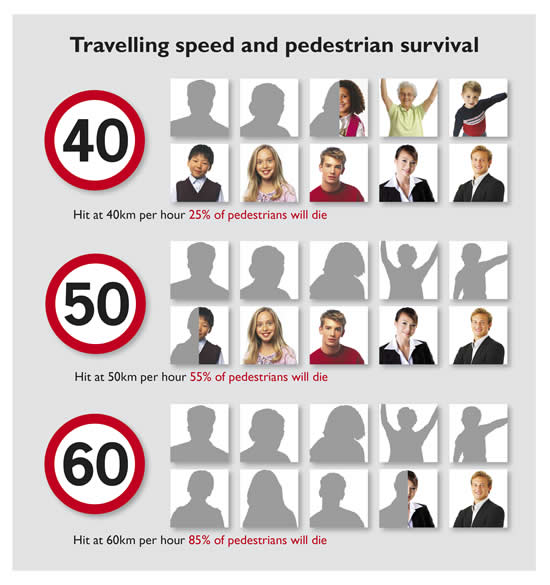

6. Infill Sidewalks in 2018 and why we might not see New Infill Sidewalks for a Long Time:
Every November sees the announcement of the streets that will receive sidewalks in the coming year. For 2018 the lucky winners are:
North side of Brudell Avenue from Taylor Street to Boychuk Avenue in Lakeridge/Wildwood:
35th St. between Ave. I and Ave. F in Mayfair:
Both of these projects (along with 60 accessibility sidewalk curb ramps) were funded out of the 1.1M Active Transportation Plan implementation budget. In the past few years new infill sidewalk construction has been funded out of the traffic safety reserve. However, this year both the province and the city raided the traffic safety reserve for money on a permanent basis. The province, for general revenue and the city, for Neighbourhood Traffic Plan implementation and ‘controversial project handling’ (see: the 9th Street road closure and the Avalon traffic calming plan). This is disappointing news for the already underfunded infill sidewalk construction program.
7. WCMUC is a Pleasant Surprise but Delayed.
The sprightly-named West-Central Multi-use Corridor is a multi-use pathway that the City is planning to build along the rail lines west of Idylwyld and north of 11th Street, paid for with a rail safety grant from the federal government. We covered it a few months ago.
The most recent news is that construction (scheduled to start Fall 2018) has been delayed while the city does more planning and tries to raise more money to do the complete walkway. The federal grant that is to pay for the bulk of the project has a time limit by which any work done with the grant has to be completed so we’re not sure how the city is going to square this. We hope to report more about this great project next year.
Active Transportation and the 2019 Saskatoon City Budget
Click to see the text of our budget request
Active transportation (AT) is a great way to make connections in your community, as well as to improve your health. Research shows that investments in active transportation infrastructure and supports provides a suite of benefits, including reduced injuries, improved health, and reductions in carbon dioxide and other combustion-based pollutants. Through savings in health care, and with an appropriate cost on carbon, these investments provide a high benefit-cost ratios; this means that by encouraging and facilitating active transportation, the City can improve the lives of its citizens, reduced its overall greenhouse gas emissions, and also save money in the long-run.
Parks and natural areas can be a vital part of an active lifestyle. For example, the Meewasin Trail System offers a beautiful and well-maintained year-round trail for active transportation. The province recently rejigged funding for the Meewasin Valley Authority, leaving it at-risk for chronic under-funding. As providers of cultural, environmental, and transportation connections to the city and its riverine neighbourhoods, we recognize the importance of a well-funded MVA in supporting our connection to the river valley, and in maintaining our pathways.
In November, City Council was set to task to allocate funds and set priorities through the budget process. As advocates for pedestrians and active transportation, Walking Saskatoon submitted a call for Council to increase funding for the Active Transportation Reserve, used for the implementation of the Active Transportation Plan (ATP), as well as to fund a full time manager position out of the Operations budget (you can find the link at the top of this post).
Currently, the manager is paid out of the implementation budget from the AT reserve fund, leaving little for actual implementation. At current funding levels, implementation is constrained to low-hanging fruit, and will never achieve meaningful gains and progress towards implementing and seeing in full the benefits of an active transportation city.
At the vote, motions were introduced to reduce ATP phase-in funding down to $0, and also to reduce MVA funding to $0 (see item 6.14.2, motions 13+14 at this link to see how Councillors voted). Our thanks to Councillors who voted against these motions, which were defeated, at least preserving current funding levels and providing some security to the MVA moving forward. We continue to advocate for a more equitable distribution of city resources and funding towards pedestrian-related infrastructure, safety, and monitoring.
